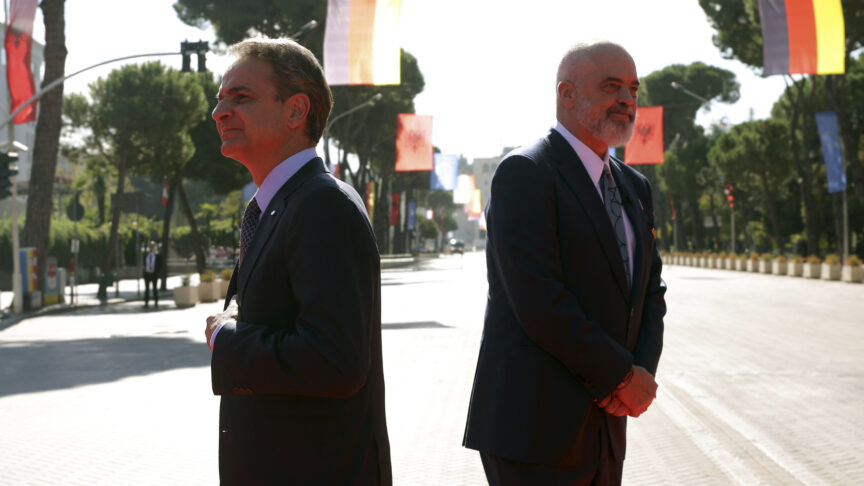The truth about Russia’s defence budget
Contrary to recent claims, Russia's defence budget has not been slashed for 2017.
Orthodoxies about Moscow’s military ambitions suddenly seem to have been put into question when respected source of defence news, HIS Jane’s, ran the headline “Russia announces deepest defence budget cuts since 1990s.” Based on analysis of returns from Russia’s Federal Treasury, the assertion was that the defence budget was being cut by 25.5%, from 3.8 trillion rubles ($65.4 billion) to 2.8 trillion rubles ($48 billion). If true, this would have been a massive deal, one that could have eaten into not only Putin’s ambitious plans for military modernisation, but also the country’s economic stability and even his own political standing.
Yet, as we shall see, the headline was profoundly misleading. The reasons for this show just how problematic definitions of “defence spending” can be. The reality, meanwhile, reflects the paradox of late Putinism, under which Russia’s president has become effectively trapped by his own apparent triumphs.
A slight contraction
The 2017 defence budget is falling, but by nowhere near a quarter. There are several reasons for the confusion.
Firstly, the Federal Treasury's data only accounts for actual expenditure, not the full allocations. The State Defence Order, for example, was only 88% executed in 2016. Viewed through the Treasury lens, that might look like a “12% procurement cut” even though in practice at least part of that shortfall is likely to stay on the books and be spent in 2017.
Secondly, the baseline figure for 2016 was distorted by a one-off adjustment. In recent years, Russia’s defence suppliers have been forced to turn to commercial loans to cover the cost of producing equipment for the military. The cost of servicing these loans was beginning to have an impact on prices and enterprise solvency, so in December 2016 the Ministry of Finance released additional funds of just over 700 billion rubles to wipe the slate clean. This, in the narrow terms of the Federal Treasury’s books, suddenly bumped the 2016 defence budget from 3.07 trillion rubles to around 3.8 trillion.
Take that out of the equation, and the underlying trend is rather more moderate: a notional cut of some 7%. The likely real cut is probably even less. This is because, in Russia – even more so than in the West – defence and security expenditure often appears under different budget lines and obscure headings. Pre-conscription physical and skills training is outsourced to schools through the revived GTO (Ready for Labour and Defence) programme. The cost for this comes out of the education budget, while part of the aid and development budget is likely paying for the mercenaries fighting in Syria.
There is also the issue of the budget sequester. In early 2016 the Ministry of Finance (MinFin) wanted to apply the same 10% sequester to the defence budget as applied to other government departments. But by the end of the year that had been haggled down to just 6%.
Finally, past practice has shown that during the year there are likely to be new windfall allocations (especially if oil prices rise) and specially-mandated allocations for particular projects, which will increase the size of the 2017 budget beyond current estimates.
Add up all of these factors and the real change in the defence budget is likely to be around 5% – a far cry from Jane’s 25.5%. Not that this is insignificant. It will prevent Russia from meeting its official target to have modernised 70% of its forces by 2020, and it contrasts markedly with the trend in the USA, where Donald Trump has committed himself to defence spending increases exceeding the total Russian budget.
Still too much
Yet it is still more than Russia ought to be spending if it cares about long-term economic development and social support. Defence, police and other security-related spending currently accounts for around a third of the total federal budget (compared with 2.3% for health and 3.5% for education) – a completely unsustainable level.
This commitment to military procurement whatever the cost to society is explained not just by military conservatism and the inevitable lure of the shiny and the new. It also reflects the degree to which, just as parts of the education, science and similar budgets are actually covert defence spending, so too the procurement budget is to a considerable degree covert regional economic support. When Serdyukov wanted to suspend tank orders in 2011, Putin publicly rebuked and overruled him, conscious of the degree to which manufacturer Uralvagonzavod was both a regional economic lynchpin in Nizhny Tagil and also a key source of political support. Likewise, the main rationale for ordering MiG-35 Fulcrum-F fighters is to keep the MiG corporation afloat in light of its lacklustre export order book.
Putin's prison
So here is the paradox. Sustained and generous defence spending has indeed bought Putin a military of considerable capacity. It has also kept defence enterprises – in many cases ones on whose health cities and regions depend – afloat against the uncaring pressures of the market. Yet these are precisely the reasons why significant spending cuts are now politically unthinkable, especially in the run-up to the 2018 presidential election, clearly intended to be a triumphant coronation and celebration of Putin.
Thus, Putin is in many ways a victim of his own success. He is forced to spend money – that could be far better devoted to other purposes – on kit of often-questionable relevance to Russia’s actual security challenges. It may not be much comfort for a West currently struggling with its own defence spending challenges, but Putin may in fact be Russia’s greatest security threat, mortgaging future economic and social progress for short-term gain.
The European Council on Foreign Relations does not take collective positions. ECFR publications only represent the views of their individual authors.


